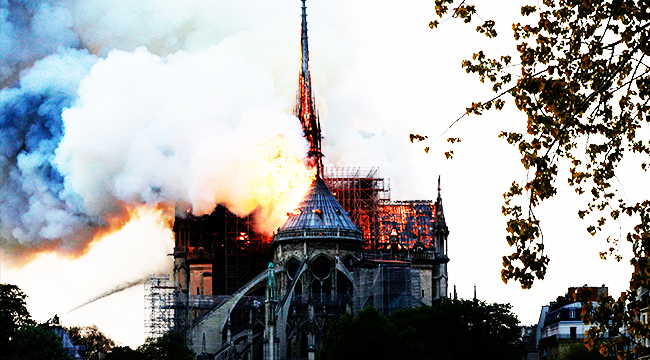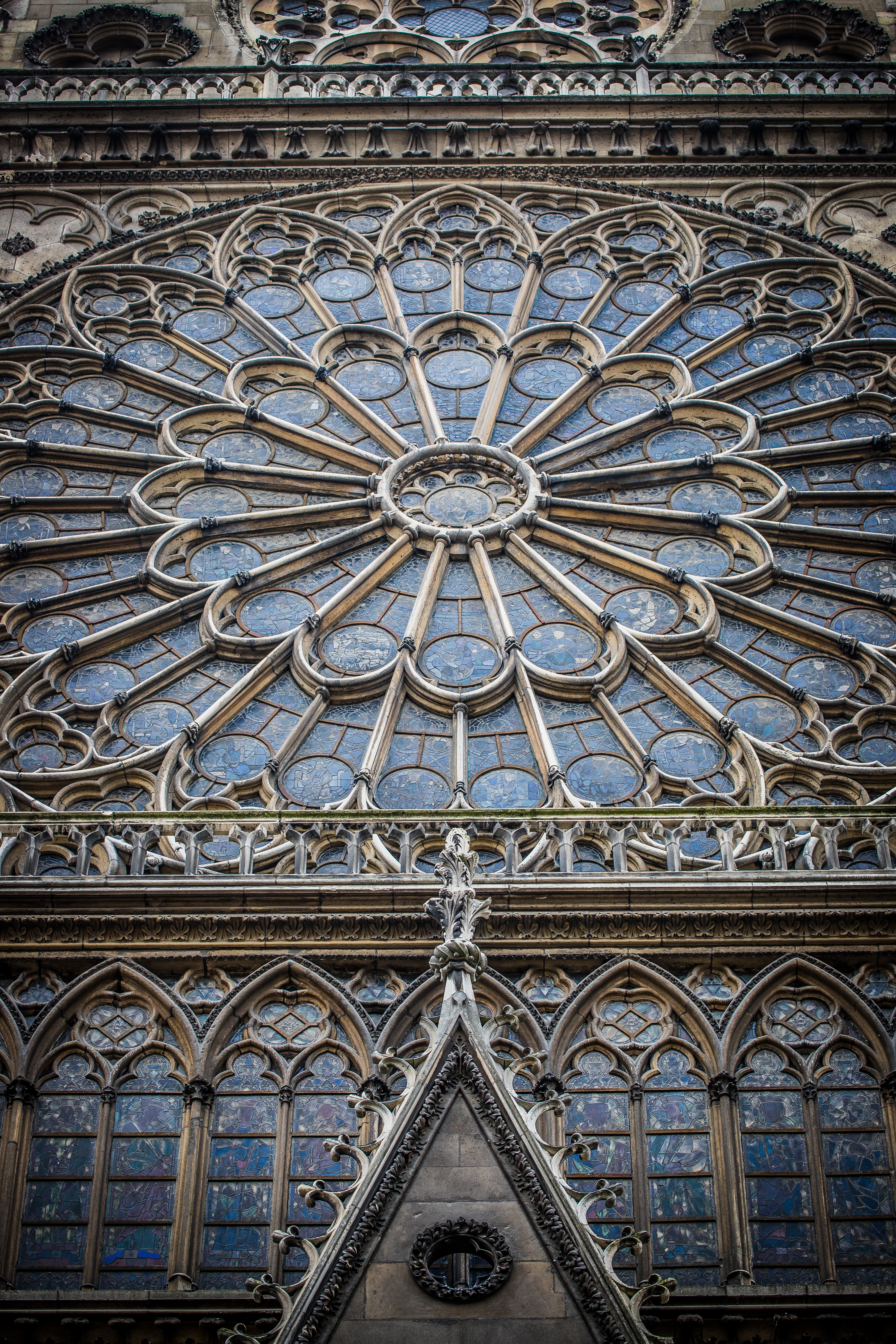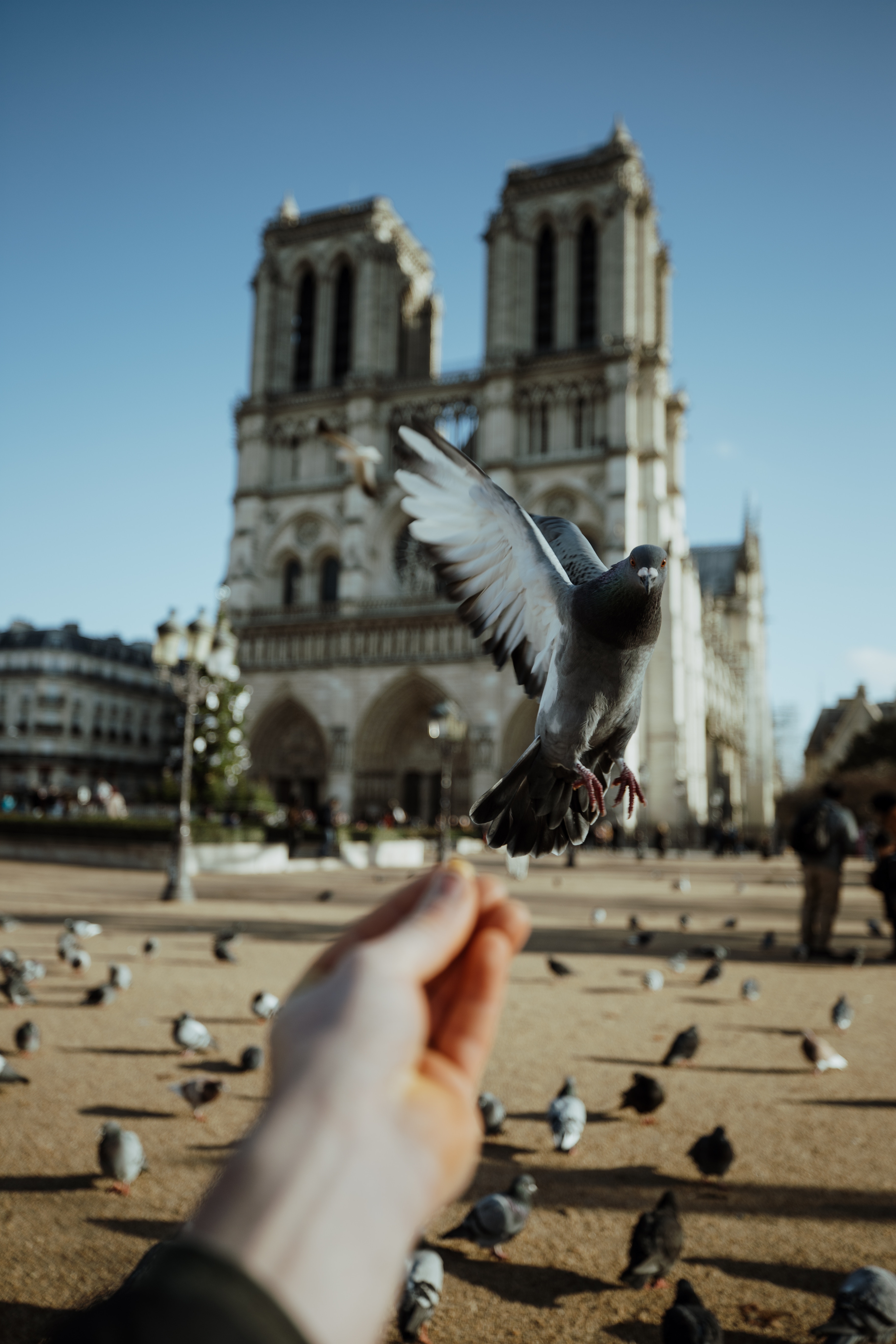
On Monday, April 15th, haunting photos tore across the internet showing the Notre Dame Cathedral ablaze. I was at my desk when I saw the image above — the famed spire engulfed in smoke and orange flames. For the rest of the day, I frantically pored over articles and watched tributes fill my newsfeed as this beloved piece of 850-year-old history began to crumble.
All too often, a disaster on the other side of the world has a sense of otherness to it. It feels too distant to evoke our sympathy. Then there are those events so globally significant that they cut through the static and unite millions in grief. For me, Notre Dame was one such moment. Since its completion around 1260, the church has survived wars, the French Revolution, Napoleon, and endless streams of camera-wielding tourists. Watching its structures fall left me genuinely sad.
It’s been about seven years since I first stepped into Notre Dame as a student studying abroad. At the time, I’d never left North America and studying in Paris seemed idyllic. It represented freedom and coming of age; a chance to get unstuck from life back in my hometown. I arrived in January to frigid rain and perpetually overcast skies. The weather quickly sobered my fantasy of what Paris was (perpetual spring!), but I was undaunted and immediately began a week of sightseeing. A night at the Louvre, a trip up the Eiffel tower, walks through Monte Martre, and of course, a tour of Notre Dame Cathedral.
This was 2012 — the 850th anniversary of Notre Dame — and the courtyard leading up to the front of the building was lined with signage celebrating the landmark year. Tourists from around the world formed clusters of tour groups, speaking languages I didn’t recognize. I approached the edifice and stopped to gaze skyward. The gothic arch was intricately sculpted with bishops and religious figures looking down on the entrants with all-knowing judgment. The infamous bell towers, dressed with menacing gargoyles, towered over me.
“Okay, let’s head in,” my study abroad orientation leader announced.
I stepped through the doorway and suddenly the world fell silent. The dark, gothic pillars drowned the bustle of crowds and the soft light filtering through the stained glass windows seemed to somehow transform the clicking of cameras to a hymn-like whisper. Water dripped down my coat as I fingered my iPhone in my pocket, contemplating whether or not to take pictures. As a 19-year-old amateur traveler, I’d wanted to see Notre Dame simply to check it off the list, because it was in my history books and because I loved The Hunchback of Notre Dame as a kid. But once inside the church, I was… humbled. The structure reflected beauty, holiness, and centuries of labor and human excellence. It was an architectural masterpiece. A grand spectacle. A veteran of war and time, of turmoil and triumph.
And there I was — standing silently — hit by a sense of awe that I hadn’t expected. I’d only walked a few feet through the entryway, but my relationship with history had changed irrevocably. I’d read plenty of history books, I’d taken endless tests, but this was something I could feel on a deep level. I longed to linger for hours.
“Time to move on!” our group leader chirped, ushering us out of the cathedral. Just that quickly, the moment was over and I was just another tourist being herded around Paris.

Those first rainy days in Paris dragged on, turning into weeks of rain before I finally got a glimpse of sunshine. When Spring finally began, I continuously found myself drawn to the Seine, near the Ile-de-cite where the Notre Dame lives, only to catch a glimpse of those bell towers — looking as if they held the entire city together.
Eventually, my classes grew tiresome. Not necessarily because they were hard, but because sitting in a classroom felt sacrilegious the closer and closer I got to my flight home. I’d taken to wandering the streets aimlessly after classes, usually in search of a new boulangerie where I’d either get pain au chocolat or a fresh baguette to accompany my stash of goat cheese. Most days, without thinking, I’d find myself pulled back to the Seine gazing at Notre Dame with chocolate all over my fingers.
Maybe it was the inherent beauty of the scene, the exquisiteness of the sacred, or some vestige of whatever internal shift I felt that first day inside the cathedral that made me feel so comfortable gazing up at the Notre Dame, contemplating my own insignificance, but I soon longed for it. As I walked to class one day, to take a test I’d barely prepared for, I grabbed a baguette from a boulangerie. Minutes later, I found myself heading towards the Seine. I stepped through the edifice of Notre Dame, just as I had months prior. I gazed up again at those arches, admiring their towering size and strength. The sun hit the rose windows in a way that made my over-analytical, often-skeptical brain feel cleansed — lost in a moment of holiness and surrender.
The world melted again. The hymn of human history, of architectural genius, of sin, and of labor was omnipresent. My test seemed all the more mundane. I decided it could wait.

Before I left work yesterday, it was announced that the structure and core of Notre Dame had, in fact, survived. The losses are massive, but the rebuilding effort will be well funded. Scions of the French luxury goods industry have committed 600 million Euros already. Apple has promised to lend support. Though the fire reminds us that nothing lasts forever, the restoration will, in and of itself, be historic. Notre Dame has in fact been through worse — it has lost its spire before, it’s been through WWII, decades of rioting, harsh weather, and the ravages of time.
There’s a reason over 13 million people travel to Notre Dame every year and why we yearn to visit to such landmarks at all. The cathedral serves as a touchstone of history and a call to savor the transient beauty and sacredness of this world. The fire didn’t destroy that. It simply heightened it, serving as a reminder of the growth, loss, and ultimate resilience of humanity itself. That sense of history that I felt the first time I walked under the entryway isn’t gone. It will stretch on, its course changed but its sanctity intact.






